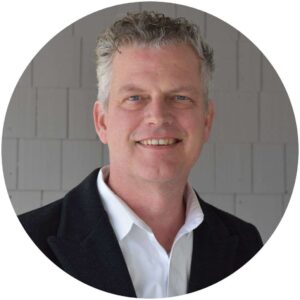Last week at a local event, I was introduced to the book, Toxic Charity. The author, Bob Lupton, outlined the toxic effects that modern-day social services have upon the very people who are meant to benefit from them. He discussed how our traditional service models often create dependence and can disempower individuals rather than empowering them. He advised community investors, policy makers, nonprofit leaders, board members, and donors to limit one way giving exchanges for true emergency situations. To develop a nontoxic charity that addresses chronic needs, he urged leaders to focus on lending, hiring, investing, and developing those they serve.
I was digging the program, but my heart truly skipped a beat 20 minutes and 40 seconds in, when Bob answered the moderator’s question “How can funders, nonprofit leaders, board members and donors get started?” Bob’s response was:
“One of the questions that is important for us to ask is, what are we measuring about our service? Are we measuring activities or are we measuring outcomes? If we are measuring activities, that is the number of people who line up for our services, number of boxes we fill, or the number of beds. Those are the activities. They say nothing about outcomes, the downstream impact of those activities. One of the first things is to look at what we measuring. What do our PR materials include?”
Yes, yes, and yes! I had never met Bob and I had not yet read his book, but I was resisting the urge to jump up with a standing ovation. When nonprofits switch from measuring activities to measuring outcomes, they may quickly realize that their well-meaning, well-designed programming is not working. They would realize that although they are trying to address issues of poverty, 1 in 5 children still live in poverty (annual family income of less than $24,000) and that has been relatively consistent for the past five years (Kids Count). Programs would realize that young, minority adults are almost twice as likely to be unemployed than young, white adults (Bureau of Labor Statistics, 2015).
Collectively, our social sector activities are not working. The shift to managing to outcomes must occur if we want the healthy, more vibrant communities we all say we want. It is time we let go of our excuses, and start to ask the questions related to our true impact. How are we really changing lives and changing circumstances?
The good news is that it is not as difficult or as expensive as everyone thinks. As I highlight in Impact & Excellence, there is no correlation between the size and budget of an organization and their ability to develop high-performance cultures, which are focused on outcomes. If I could expand on Bob’s comments, I would add that the first steps towards becoming a nontoxic charity are:
1. Gain commitment of your board and leadership to measure and manage towards your organization’s outcomes.
2. Get clear on the short- and medium-term outcomes your organization’s activities are trying to achieve and ensure that these are conceptually aligned with longer-term outcomes. Search out existing research or best practices that demonstrate that your short- and medium-term outcomes will lead to your desired longer-term outcomes. If there is not published research, find supporters to help you conduct your own.
3. Develop a system for real-time gathering and reporting of your desired short- and medium-term outcomes.
4. Establish a formal process for the review of your results and continuous improvement activities to improve your organizations outcomes.
5. Be willing to change your activities if the program is not achieving the desired outcomes. Be innovative and be creative. Use the outcomes to guide the process. The Wright Brothers managed to the outcome of flight and didn’t settle for any other result.
As Maya Angelou said, “I did then what I knew how to do. Now that I know better, I do better.” There is no doubt social sector programs are doing what they know how to do, but now we know better. It is time to make our efforts and results better. Let’s be the generation known for real change!
Need assistance with developing your performance and outcome measures? Seeking a researcher to evaluate the impact of your programs? Measurement Resources is here to help! We offer customized workshops and consulting services designed to get your performance and outcome measures established quickly.
Contact us today for your FREE 20-minute strategy session to learn more about developing a nontoxic charity!





